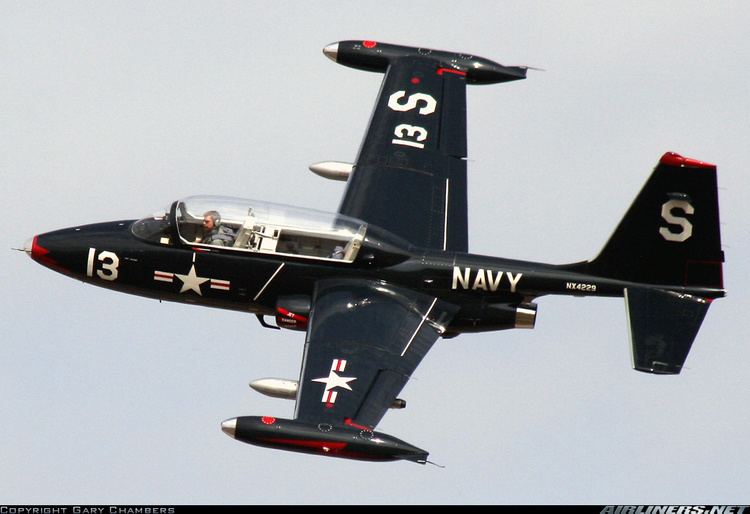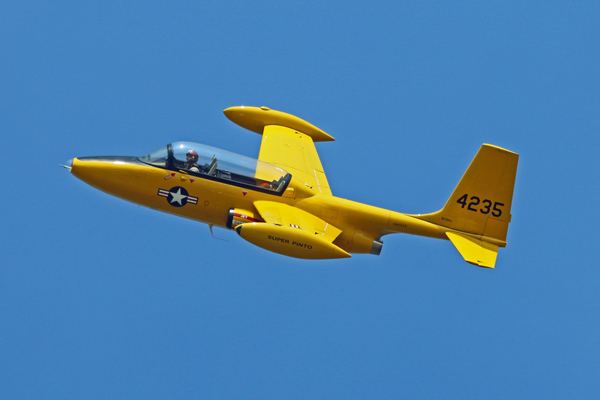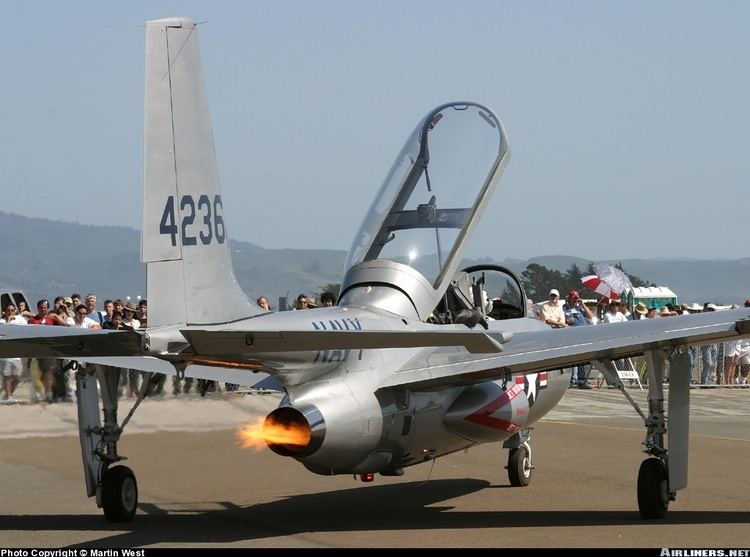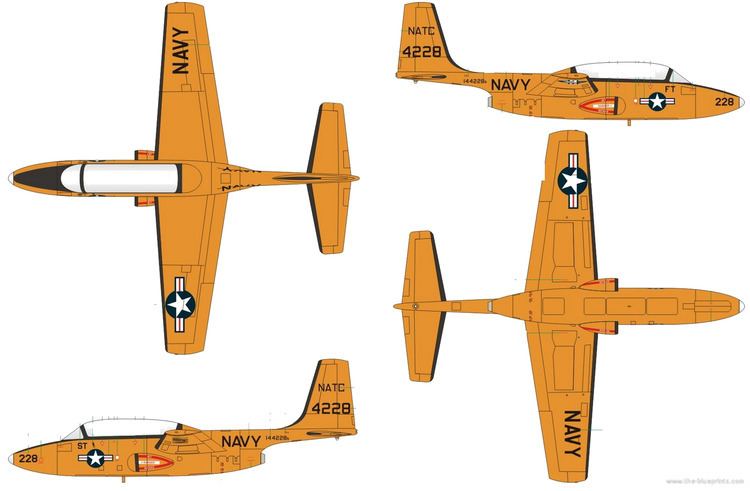Top speed 555 km/h Length 9.32 m First flight March 26, 1956 | Wingspan 9.09 m Engine type Teledyne CAE J69 | |
 | ||
The Temco TT Pinto was a jet-powered, tandem two-place primary trainer aircraft built for the United States Navy by Temco Aircraft of Dallas, Texas.
Contents
- Design and development
- AJI T 610 Super Pinto
- Operational history
- Survivors
- Variants
- Operators
- Specifications TT 1
- References

Design and development

The Temco Model 51 had been initially proposed to the US Air Force in response to an Air Force competition for a jet-powered primary trainer, which was won by the Cessna T-37 Tweet. The concept behind the Model 51 was an attempt to provide primary training in a jet-powered aircraft. The official name for the Model 51 was the Pinto.

The Pinto was a mid-wing, tricycle landing gear trainer with an enclosed cockpit powered by a single Continental Motors J69-T-9 (license-built Turbomeca Marboré) jet engine. The aircraft carried no armament.

The TT-1s were equipped with many of the same features found in operational jets, including ejection seats, liquid oxygen equipment, speed brakes, along with typical flight controls and instrument panels. Although the flight characteristics were considered good, the "wave off" capability was rated marginal due to being slightly underpowered.

After its first flight in 1956, the prototype was sent to the Naval Air Test Center (NATC) Patuxent River to be evaluated alongside the Beech Model 73 Jet Mentor. Fourteen of the aircraft, designated TT-1, were produced between 1955 and 1957.
AJI T-610 Super Pinto

In 1968, American Jet Industries (AJI) (later to become Gulfstream Aerospace) re-engined a TT-1 Pinto, replacing the J69 with a 2,850 lbf (12.7 kN) General Electric CJ610 (the civil version of the J85), with the modified aircraft, the T-610 Super Pinto, flying on 28 June 1968. The new engine significantly increased performance, with maximum speed reaching 450 kn (518 mph; 833 km/h), and AJI marketed the aircraft as a light attack aircraft.
The prototype Super Pinto, together with drawings and production rights, were purchased by the Philippine Air Force, which planned to build the aircraft as the T-610 Cali.
Operational history
In 1959, these aircraft served in the Air Training Command at Pensacola, Florida and used in a training program demonstration testing the feasibility of using a jet-powered trainer for primary flight training.
In March 1959, Aviation Cadet E. R. Clark soloed in a TT-1, the first student in naval aviation history to solo a jet without previous experience in propeller aircraft.
By the end of 1960, the TT-1s were phased out of operations in the Naval Air Training Command and sold as surplus.
Survivors
In December 2016, five of the TT-1 Pinto series still appeared on the U.S. civil roster (one with an expired certificate), down from seven, four of them Super Pintos, in 2011.
As of late 2015, one T-610 prototype was still preserved at the Philippine Air Force Museum.
Variants
Operators
Specifications (TT-1)
Data from Jane's All The World's Aircraft 1956–57
General characteristics
Performance
